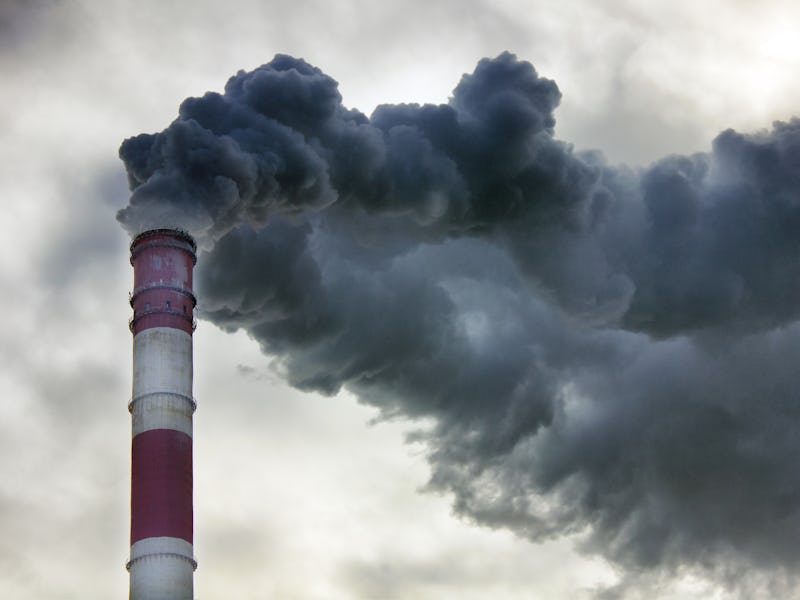An overlooked public health issue could contribute to stillbirths, research says
There's a "major" link between air pollution and stillbirths around the world.

In India’s capital, New Delhi, thick smog envelops the city’s skyline. Hidden in the smog are tiny, harmful particles of air pollution, known as PM2.5, which are linked to one in six deaths around the world.
Now, researchers say air pollution could be a hidden risk factor for stillbirths, which cause the premature deaths of thousands of newborn infants in South Asia and around the world. The findings of the research were published Tuesday in the journal Nature Communications.
What’s new — The scientists honed in on four key findings associating air pollution with stillbirths. The CDC defines stillbirth as a fetal death occurring from 20 weeks of pregnancy onward, though it also occurs when a baby is lost during delivery.
The team found that PM2.5 air pollution increases the risk of stillbirths. Every 10 micrograms of PM2.5 exposure led to an 11 percent increased risk of stillbirth in mothers in 137 countries. Air pollution had the highest association with stillbirth compared to other types of pregnancy loss, such as miscarriage.
There was a stronger association between stillbirth and air pollution in women at least 34 years old, but younger women between 20 and 34 years old had the greatest exposure risk to PM2.5 particles.
Researchers concluded that exposure to PM2.5 air pollution was linked to nearly 40 percent of stillbirths in 137 countries, which account for more than 98 percent of stillbirths worldwide. PM2.5 air pollution was linked to 0.83 million out of 2.09 million total stillbirths in 2015.
Finally, the countries with the highest PM2.5-linked stillbirths tended to be lower-middle-income countries in South Asia and Africa. India had the greatest number of air-pollution-linked stillbirths, followed by Pakistan, Nigeria, China, and Bangladesh. But countries in the Middle East like Qatar and Saudi Arabia also ranked highly on the list in terms of the percentage of stillbirths linked to air pollution.
“Due to the ubiquity of PM2.5 pollution, it may be a major contributor to the global burden of stillbirth,” write the researchers.
A woman wears a mask on a cold, smoggy November day in Delhi, India.
Why it matters — Researchers write that there are “knowledge gaps” in understanding the link between PM2.5 and stillbirths, but we are beginning to understand how air pollution could increase the risk of pregnancy loss and harm children’s health.
Studies have shown that air pollution particles can cross the placental barrier and inhibit oxygen transport, leading to low oxygen levels for the fetus. Abnormalities in the placenta occur at higher rates in stillbirths than in live births, and scientists suspect air pollution may contribute to those irregularities.
Environmental factors are often “unseen” and therefore overlooked in clinical discussions of stillbirth risk factors, according to the paper.
“Our study adds evidence verifying the adverse effect of PM2.5 on stillbirth, an important but neglected public health issue,” write the researchers.
Tao Xue, the lead author of the study and an assistant professor at Peking University in China, tells Inverse it’s especially important to understand the impact of PM2.5 in lower-middle-income countries, where pregnant individuals are exposed to significant levels of air pollution and face already high risks of stillbirth due to poverty and other factors.
But stillbirths occurred in all continents around the world — roughly 21,000 babies in the U.S. are stillborn every year — and so it’s important to understand how hidden risk factors like air pollution can increase the risk for stillbirths.
“Air pollution is important due to its prolonged and universal exposure,” Xue explains.
A figure from the study shows the number of stillbirths linked to PM2.5 air pollution in different countries.
How they made the finding — To analyze the possible links between PM2.5 air pollution and stillbirths between 1998 and 2016, the researchers obtained records of pregnancy outcomes from the Demographic and Health Surveys program, which conducts surveys every five years in more than 90 countries. They analyzed reports on more than 13,000 stillbirths and 32,000 live births.
Referring to recent research that provided “state-of-the-art” monthly PM2.5 concentrations from 1998 to 2019, the scientists were then able to create statistical “exposure-response curves” to assess the impact of PM2.5 air pollution exposure on stillbirths.
What’s next — Some countries like China have implemented nationwide policy initiatives to tackle air pollution in recent decades.
The study also suggests that personal measures may help reduce air pollution. These measures include wearing masks, installing air purifiers, and avoiding the outdoors when air pollution is too high. Xue says that some doctors may recommend women modify their behavior to reduce air pollution risk but adds that such clinical advice needs “to be further confirmed by more advanced studies.”
Although the paper says there has been a decline in the rate of stillbirths since 2000, the reduction in stillbirths did not improve as quickly as child mortality rates overall. More than 30 countries saw no reduction in stillbirths, suggesting we still have a long way to go to protect maternal and fetal health.
The researchers hope their findings push policymakers to implement measures to reduce air pollution. For example, coal-powered plants and gasoline cars are significant contributors to PM2.5., so reducing pollution from those sectors or boosting renewable energy could limit air pollution exposure to pregnant individuals.
“Improving maternal and infant health is on top of the list for any public health policymaker. We should put every effort to do that,” Xue says.